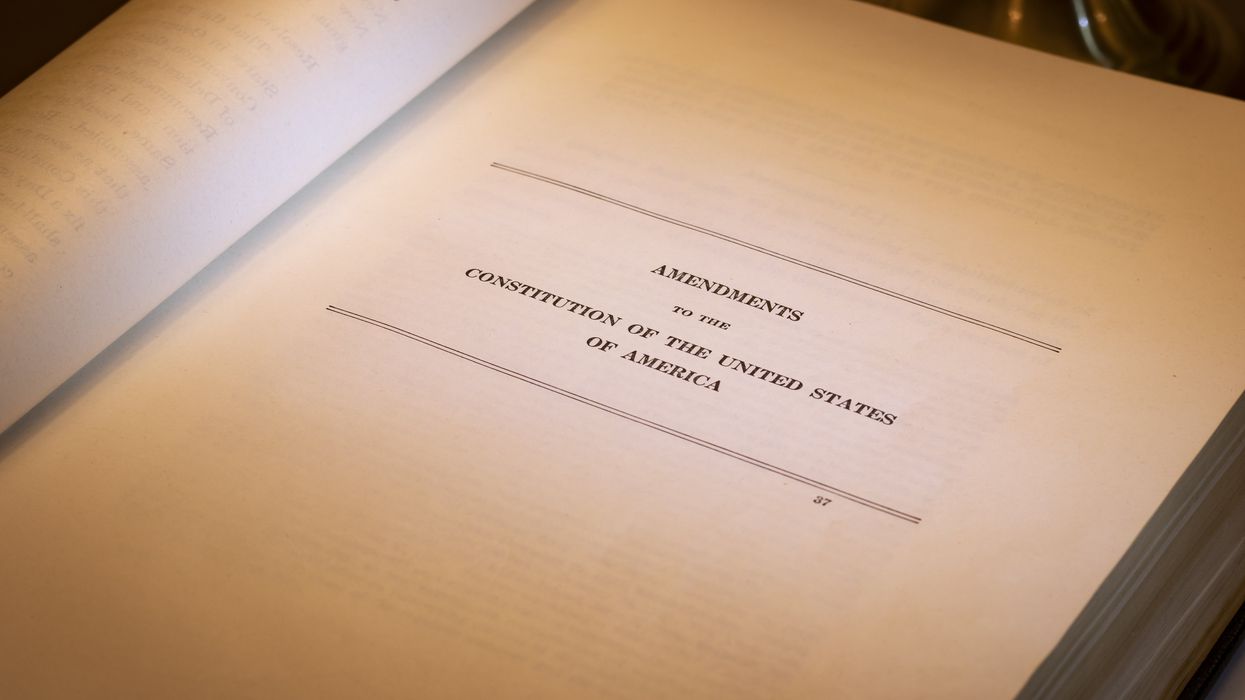LaRue writes at Structure Matters. He is former deputy director of the Eisenhower Institute and of the American Society of International Law.
If the next wave of constitutional amendments is coming, as I laid out in my previous article for The Fulcrum, two questions emerge: What will the amendments cover, and what will need to occur for the nation to ratify them?
I want to look at the latter question now and will highlight amendment candidates in the future. But first, a reminder that amendments mostly have come in single-decade waves, separated by gaps of four decades or more. We are now in the current gap’s sixth decade, and also find ourselves in the late-gap stage when conventional wisdom says that amendments are impossible.
We don’t know how long this stage will last, or just what will produce the civic energy needed to elevate amendments into the public realm. But there are signs of change. First, grassroots amendment efforts exist, for example, to rein in electoral campaign spending or oppose the Electoral College. Their paths are hard, but such persistent pursuit of foundational change is heartening to see as well as critical to eventual success.
Second, thought leaders are leaving the “unamendable” conventional wisdom behind. Last year, best-selling authors Steven Levitsky and Daniel Ziblatt stepped forward to advocate for a set of democracy-saving amendments in "Tyranny of the Minority.” This year already, Richard Hasen proposed an affirmative voting rights amendment in "A Real Right to Vote,” and Maxwell Stearns challenged us to consider a deeper, amendment-requiring shift to a parliamentary system in "Parliamentary America.”
Books and ideas may not a movement make, but good ones can anchor it or offer credibility for thinking big – a necessity when it comes to amendments. Importantly, these authors and other proponents correctly frame their proposals beyond the near term and always in conjunction with needed non-constitutional reforms. And Hasen makes the point that these other reforms derive their own benefit from active association with a related amendment goal.
Third, there’s the vital work of outlets like The Fulcrum, which deserves kudos for taking long-term ideas out of the classroom, think tank or office. By sharing the views of Beau Breslin, Kevin Frazier, Seth David Radwell, myself and others, it reminds readers that what’s beneath our government’s day-to-day machinations also is important. Cracks in the foundation can be ignored for a while, even with good reason, when the roof is leaking, but the underlying erosion worsens and eventually needs repair. Such as amendments.
Fourth, our civic environment also signals when an amendment gap is ending. Sadly, history tells us that the signs include sharp divisions, frequently involving violence. But the violence need not be organized, as it was with the Civil War. Consider the devastating income inequality, labor exploitation and child abuse that preceded the Progressive Era’s four-amendment wave. Today, we have our work cut out for us to keep our polarization from devolving into the worst humans are capable of.
Fifth, specific events can change the environment to spur civic restoration leading to amendments. If a presidential election were to end without a candidate winning at least 270 Electoral College votes, the House of Representatives would choose the president, with each state’s delegation having one vote. While our democracy would likely survive this debasement, we would do so in part by finally abandoning the Electoral College.
More plausibly, we could have another Electoral College misfire, when the selected president does not win the popular vote. A third such case since 2000 could similarly represent a bridge too far for citizens and politicians alike. Or a campaign finance scandal, such as millions of dollars in foreign donations helping to elect a president or defeat a senator, could rouse the public and stiffen a few legislators’ backbones to support an amendment embracing reasonable limits on campaign spending.
Events might also change the existing partisan support for amendments (and partisan advocacy early in an amendment campaign’s life is not unusual; most amendments began that way). A fiscal crisis, for example, might prompt traditionally right-wing spending cutters to forge common ground with advocates of fairer and sufficient public revenues, or even to pursue their aims legislatively rather than constitutionally. Or evolving demographic and political affiliations may shift Electoral College support from red to blue.
These five factors will affect the paths to future amendments. Against this still-uncertain backdrop, we must continue working to shape the change we need, restore respect for the truth, regain our ability to disagree agreeably, and embrace treating foundational causes for our problems and not just their symptoms.
And we should not minimize the second factor – change among thought leaders – which signals where we are today. A set of books alone may seem an unlikely source for a tipping point, but when an election law expert as prominent as Rick Hasen put his reputation on the line for a constitutional amendment, all election reformers took notice. When other leaders join him, more Americans should take notice as well.
In my next piece, I’ll review the issues that may lead, follow or be swept up in the next amendment wave when — not if — it arrives.



















